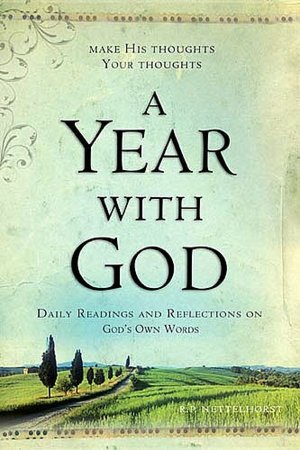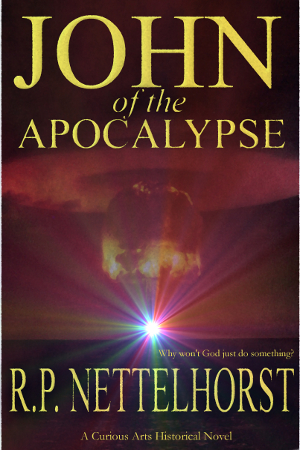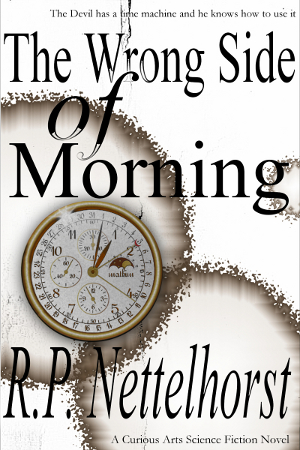Many years ago when I was in college, I had the opportunity to spend a couple of my summers working on a kibbutz in Israel. What is a kibbutz? It is a communal farm. So think of communes, but run by hard working people who are not on drugs, wear shorts and t-shirts and often carried guns since this particular commune was on the border next to a country that at the time harbored terrorists and was in a state of war with Israel. The kibbutz was surrounded by barbed wire and guard towers. Every morning I was awakened at 4:00 AM by a nice young man toting an Uzi who’d knock on my door and call out “good morning” in Hebrew. I’d toss on my clothes and then stumble out to begin an eight hour shift in the fields. I worked six days a week, from about four in the morning until noon. It was a farm, after all: a farm located 600 feet below sea level where the temperatures rose to over 100 by noon.
Combining socialism and Zionism kibbutzim were a unique Israeli experiment which endured for over fifty years as utopian communities. Today, most kibbutzim which survive are not much different from the capitalist enterprises and regular towns to which the kibbutzim were originally supposed to be alternatives. No more than about seven percent of the Israeli people ever lived on kibbutzim.
Eleven people founded the first kibbutz in 1909 at the southern end of the Sea of Galilee, the lake that the Israelis call Lake Kineret (which means “harp”). That first kibbutz was called Degania. By the beginning of World War II there were hundreds of kibbutzim with a combined population of around 25,000, about five percent of the total Jewish population in Palestine at the time.
The kibbutz I worked on was located within five miles of Degania. It had been founded in the 1930s by Jewish people who had come there from Rumania. They called it Kibbutz Massada. When I worked there in the mid 1970’s there were about 300 people living there, men, women and children. Kibbutz Massada was located right on the Jordanian border.
The kibbutzim of Israel raised a variety of crops; many also housed factories and ran hotels for tourists. Kibbutz Massada had a small factory that manufactured valves for engines, but primarily it was a farm. They raised chickens and dairy cows, and had fields of date palms, banana trees, alfalfa, olives, and citrus fruits.
My first job on the kibbutz was working in the banana fields. Banana trees are swamp plants and in the old days, they would actually flood the fields. Today, they use a drip irrigation system, something that the Israelis invented in order to conserve water. Nevertheless, the fields are incredibly muddy, and filled with insects and enormous spiders. How enormous? Their webs stretched between trees for ten feet. There’s nothing like walking down a row of trees to suddenly find yourself face to face with a fist-sized spider hanging midair between trees on a barely visible web.
Each banana tree grows one enormous bunch of bananas that is so large and heavy that it will pull the tree over long before the bananas are ripened. Therefore, the trees need to be propped upright, to keep that from happening. I went throught the fields, putting down two poles for each tree on one day, and then on another day going back and using them to prop the trees upright.
My next job on the kibbutz was working with the date palms. Standing upwards of twenty or thirty feet tall, I had to ride a motorized cherrypicker, very similar to those things you see the workers using to fix street lights or telephone poles in order to reach the tree tops. I’d lift myself up in one of those to the place where the date bunches were growing so I could tie the bunch to a couple of limbs. Otherwise, the bunch would fall out of the tree before the dates were ripe. Like banana trees, date trees are not concerned with their fruits staying nice so that they may be consumed by people. The trees only want their seeds to be scattered.
Creatures of various sorts lived in the date palms. Besides the expected bugs, it was a common occurance to find chamelions, their enormous eyes swiviling in different directions as they watched both you and the fly they were interested in consuming. Chamelions were not the only large animal in the treetops. There were also rats, who would startle me by suddenly leaping out, only to fall the twenty to thirty feet down to the ground below.
The date trees I worked in were located on the edge of the Jordanian border. Next to the field, I could look down and see a dirt road. Beside the road, there was a barbed wire fence; beyond that, there was a smooth track of brown, dusty dirt where one could see little metal mounds every so often: a mine field. A second barbed wire fence separated that mine field from the water of the Yarmuk River.
Occasionally, running along the fence one would see wild boars; they’d dart from the bushes beside the river, and then scurry back again. One day, as I was tying date bunches to palm fronds, I heard a loud “thump” from the direction of the border. I looked over just in time to see a boar arching through the air. It had accidentally hit one of the mines. I have enjoyed telling people ever since that I’ve seen a pig fly.
The kibbutz citizens—kibbutzniks—had many stories to tell. Around the kibbutz, among the gardens and manicured lawns surrounding their homes, were several concrete bunkers: bomb shelters. Kibbutz Masada, like dozens of the kibbutzim near the Sea of Galilee, existed within the shadow of the mountains called the Golan Heights. Until 1967, when Israel took them from Syria following the Six Day War, the Syrians had controlled those mountains. Every night between 1948 and 1967, the Syrians regularly lobbed shells from those mountains onto the kibbutzim. The children grew up spending their nights sleeping in those bomb shelters. Even in the mid 1970s when I was there, the evidence of past shelling was clearly visible in the destroyed buildings. They told me about how one night a bomb landed in the middle of their communal cafeteria. In the date fields, I saw several stumps of date trees that had been destroyed by incoming shells.
Today, those concrete shelters that used to protect the Israelis from the nightly barages are used simply as store rooms. Keep those nightly shellings in mind the next time you hear talk that the Israeli control of the West Bank and Gaza are the cause of violence. Between 1948 and 1967 when the Syrians nightly bombed the kibbutzniks, the Israelis weren’t in either the West Bank or Gaza. So what was the excuse then?
 Send to Kindle
Send to Kindle
 A Year With God
A Year With God A Year With Jesus
A Year With Jesus The Bible's Most Fascinating People
The Bible's Most Fascinating People The Bible: A Reader's Guide
The Bible: A Reader's Guide Antediluvian
Antediluvian Inheritance
Inheritance John of the Apocalypse
John of the Apocalypse Somewhere Obscurely
Somewhere Obscurely The Wrong Side of Morning
The Wrong Side of Morning
Hi,
I lived on that kibbutz in 1977. What a terrific experience it was. My first job was working in the kitchen , until I got an infection under my fingernail and they sent me to the hospital to have the nail removed. I had to walk home in the dark from the main road that night, past those banana fields and I can tell you I think that is the most frightening experience, wondering if there were wild boars or terrorists hiding in those whispering banana plants. I loved all the various jobs I had, from making valves for IC engines to cleaning the pool, waking volunteers early in the morning, to even working in the banana fields. I remember beer and dancing in the bomb shelters, movies on the big screen at the kibbutz nearby and going to the lake to swim. My favorite memory was the incredible mix of people from all over. What a great life experience it was for me. H. R.
do i know you? my name than was marjon van beek from holland,amsterdam.
I worked and lived on the kibbuz in the summer of ’92. There seemed to be some internal management and political troubles, but it was still a great experiance. The mine fields and guard towers were still there on the borders too. It felt strange to be picking watermelons, while watching the gunmen perched high above.
I too worked on that kibbutz in 1977. I’m planning my first trip to Israel since then- I wonder whether the kibbutz now like so many, rents their apartments to tourists??
do i know you? my name than was marjon van beek from holland, amsterdam.
Yes, you can rent a room at Kibbutz Massada. Check out this:
http://www.hagalil.com/israel/tourismus/galil/massada/massadae.htm
… I was a volunteer in 1983 …
🙂
Eric
Yes, you can rent a room at Kibbutz Massada. Check out this:
http://www.hagalil.com/israel/tourismus/galil/massada/massadae.htm
… I was a volunteer in 1983 …
🙂
Eric
hi…i lived on kibbutz masada for two years, from 1969 to 1971 when i was married in the dining room to a kibbutznik…i had experienced quite a lot of plo attacks including getting wounded…we spent many days and nights in the bomb shelters…the artwork on the walls were from our volunteer group..i painted a few myself…anyway, i still have good friends and family living there. what a beautiful place…judy karni now living in norcal…
I am another Kibbutz Massada volunteer from 1969 thru 1970. Despite the damned chickens and Albert loosing a leg to a mine I still regard it as one of the best experience of my life. I remember the giant banana bunches, rats in the bananas, throwing huge overripe grapefruits and the spectacular moon rises over the Jordanian heights.
Incredible people, incredible camaraderie and incredible times.
Brian James – Stone Mountain, Ga
One of the best years of my life was spent on Massada in 86…the friends I made there(a couple of which are still around 21 years on!) and the experiences of the volunteers & Kibbutzniks inspired almost a decade of travel and life changing experiences for me.I remember living in the huts, the early morning wake up calls , dragging ourselves off to the banana & avocado fields making car valves in that health and safety conscious factory…not to mention the damn chickens!!Working with Vivienne and Ruben in the kitchen and dining room…eating chicken chicken and more chicken matzo and boiled eggs… and those fantastic Friday nights at the bomb shelter disco!!Wonderful memories of fab friends and fun times…Barak,Tomer,Edan,Wendy, Tal,Barbera Duda, Selina, Irene,Janenne, Carlos, Malcolm not forgetting my bezzies Mandy & Michelle … Hope life has brought wonderful things to you all your were great fun..Shalom xx Tracey Reynolds
Greetings,
I was a volunteer in 1976 from May through September. The kibbutniks were still fearful because of the close call in 1974. Several momentous things happened during my stay. We were on one of the kibbutz sponsored volunteer trips to Safed when Entebee occured.The driver opened the door of the truck and raised the volume of the radio so all the Chassidim could listen to the news, it was Shabbat. Upon our return I will never forget how the kibbutz pulled together and the drills we were subjected to. In the aftermath, a relative of a kibbutz member and survivor of the attack visited to speak about his ordeal.
Rabin was speaking one day at Haddasah hospital and I suppose the media wanted some Americans in the audience. The kibbutz carted all the American volunteers to the speaking engagement and we were in the front row, the next day, wwe made the front page of the Jerusalem Post.
Does anyone remember the outdoor movies on the wall of a building?
During my time I met wonderful people from all over Europe, Africa and Noth America. I still keep in touch with one friend I made at that time. RB, NYC
I was born and raised on Kibbutz Masada. From 1980-1987. Some of my first and best memories take place there. My mother worked in the kitchen and my father in the bananas.
RB from NYC asked about the outdoor movies. I lived on Kibbutz Massada in 1976 and I remember weekly movies in a theater of some sort. Saw Jesus Christ Superstar there – that was kinda surreal!
I worked in the kitchen and had to fetch milk from the dairy on a pathetic miniature tractor. Often met Israeli army border patrol in a half-track who stopped so we could fill their canteens with cold fresh milk.
Loved being there.
Robert Surridge – then of Watford England, now of Napa Valley California
I was a volunteer during the summer of 1992 and it is one of my fondest memories. Pulled irrigation pipes from the watermelon field (by the fence with Jordan), sprayed pesticide in the banana field and ‘graduated’ to driving the tractor a couple of times! Countless hours playing soccer, backgammon and eagerly anticipating the weekly party down in the bomb shelter! Still keep in touch with my roommate.
J. Fernando Corredor, San Francisco, CA
Dear Adam. You were in my children house – the Gan Zair! I was your only English-speaking ally when you and your Mum and Dad (Miryam and Roger, isnt that right?) returned to Israel somewhere in the early eighties. Such fun, to read this!
I worked at Masada in the summer of '92 as well–there definitely seemed to be some management issues, but overall it was a great experience.
Memories include "Big Red" waking us up before dawn to go work the field, learning how to milk a cow, working the fields next to the heavily armed Jordanian border guards, long nights of drinking with the resident British folk, and of course the underground bomb shelter/disco.
Good times..
I was there for 6 months from nov 92 when the rain really got going and didnt let up too often!It was an amazingly nuts experience for me.All that serious bomb shelter partying was fab but going straight out to the fields afterwards was a bit extreme!!Avocados and veg prep were my main jobs, hard work but very character forming!Ah, happy days…jeepers, do u remember those noblesse cigarettes??!
Worked at Kibbutz Masada from Fall 1971 through summer 1972. Some bananas, but chickens and I got along quite well, as I did also with head chicken men Jonathan (can't remember his last name) and Eliahu Cohen (his wonderful wife Rosa made THE most delicious cheese cake). Played a lot of guitar there and ended up working in Tel Aviv and Jerusalem on a couple of Israeli films, one with Noam Sheriff, then conductor of the Israeli Philharmonic, and later the Kibbutz Orchestra. A most valuable experience and wonderful friends, kibbutzniks and volunteers alike. Would enjoy hearing from anyone who was there during that time.
i was in the kibbutz from june until december 1977. i workes in the kitchen, the bananas, and the velves factory. in my spare time i was a life guard at the swimmingpool ans assist in the first aid clinic becose i was originaly nurse and had my certificates cause i live at the beach. I remeber Tibi, my kibbutzdad, Denise from Liverpool, Beth from America and Paul from South Africa and so manny more. I had a great time and it was hard to find my life back home in Holland.